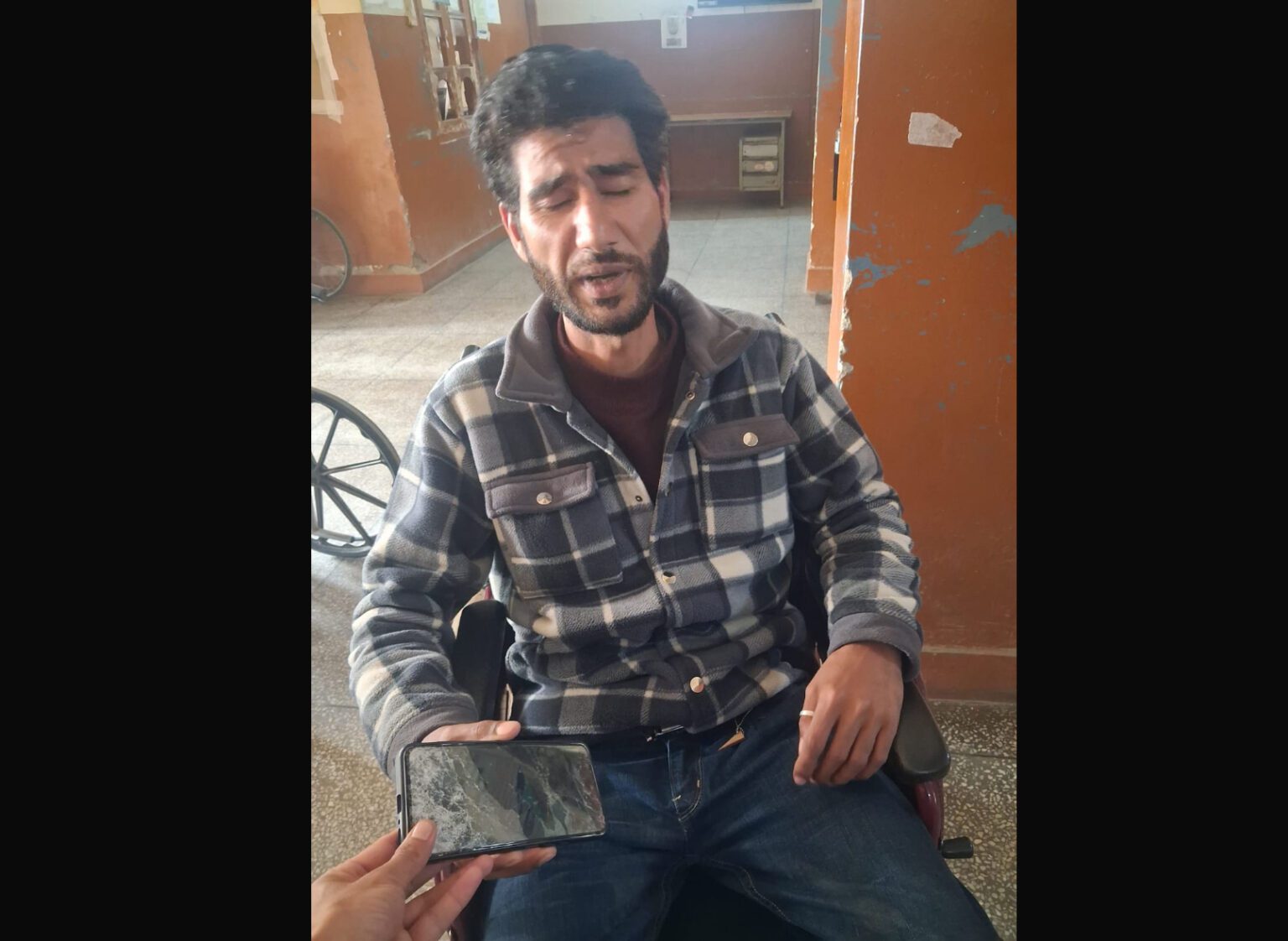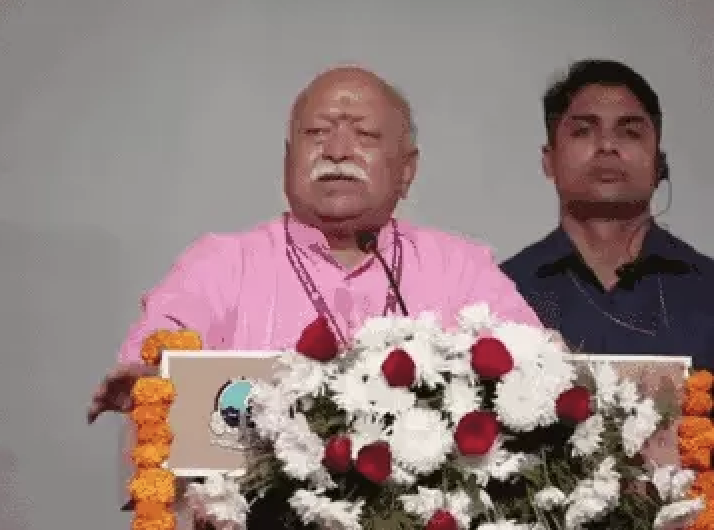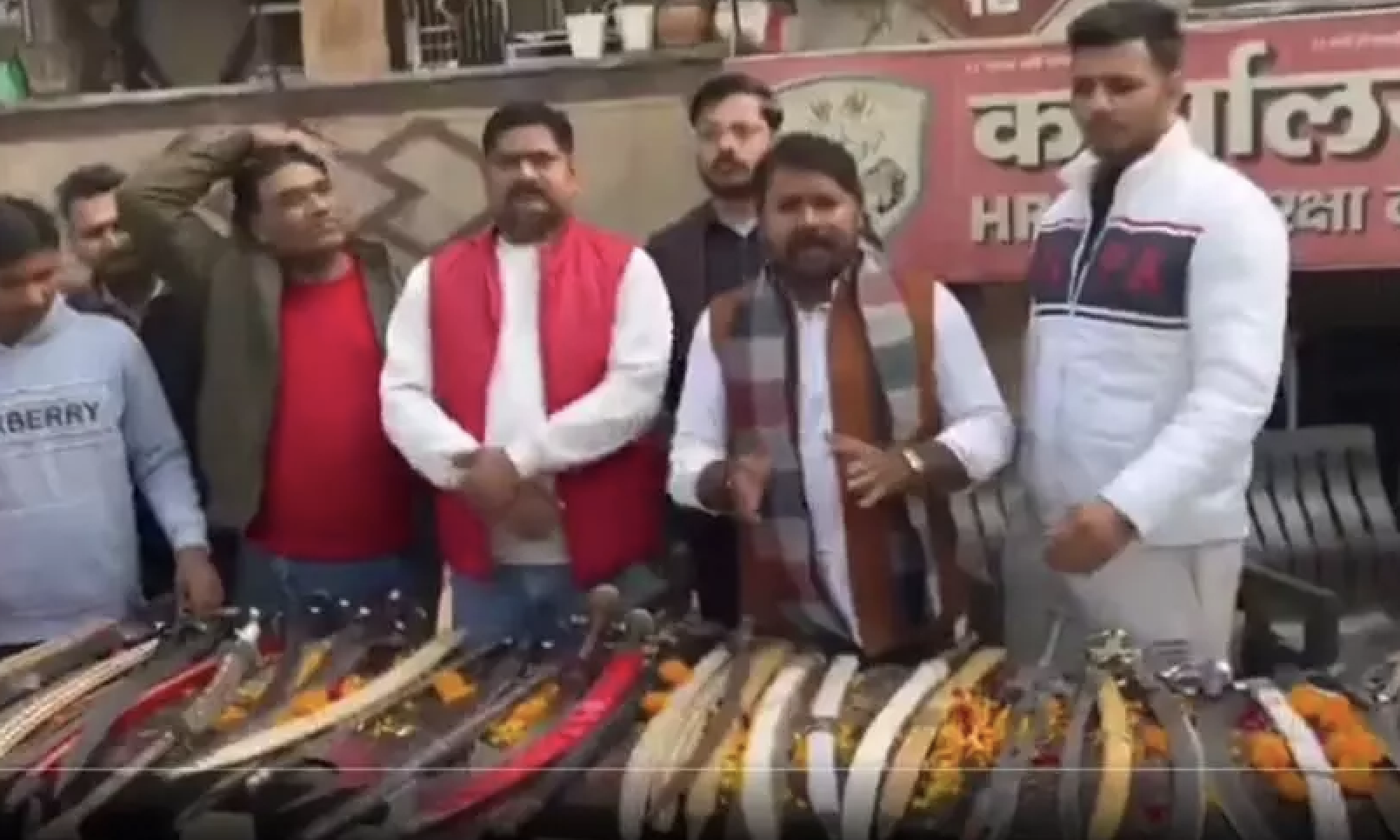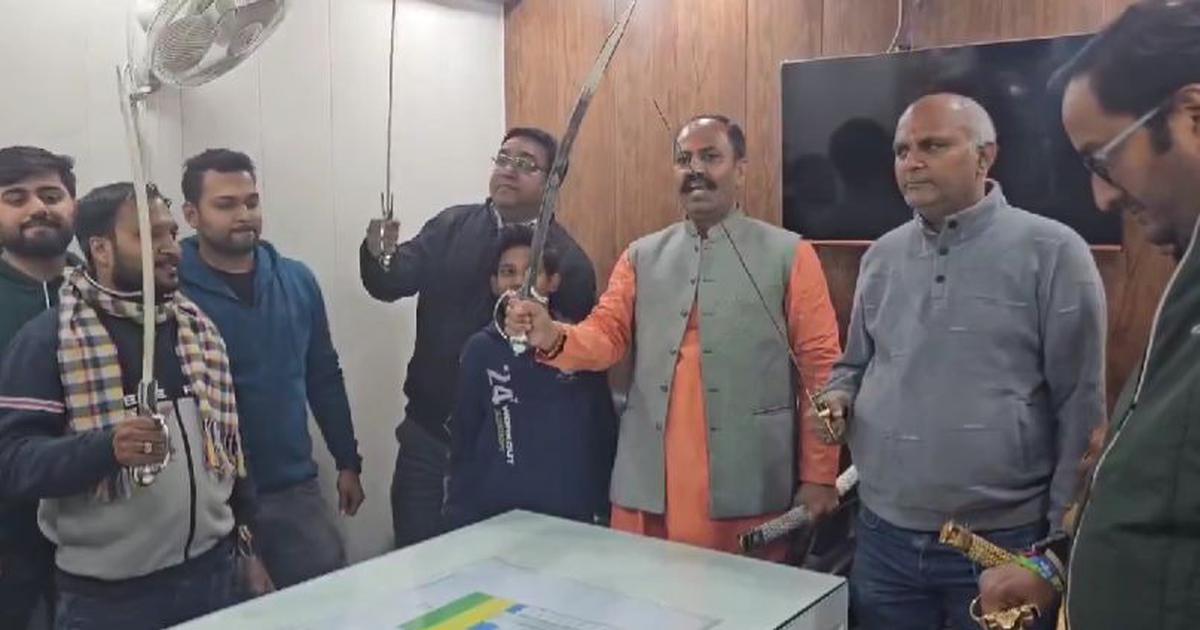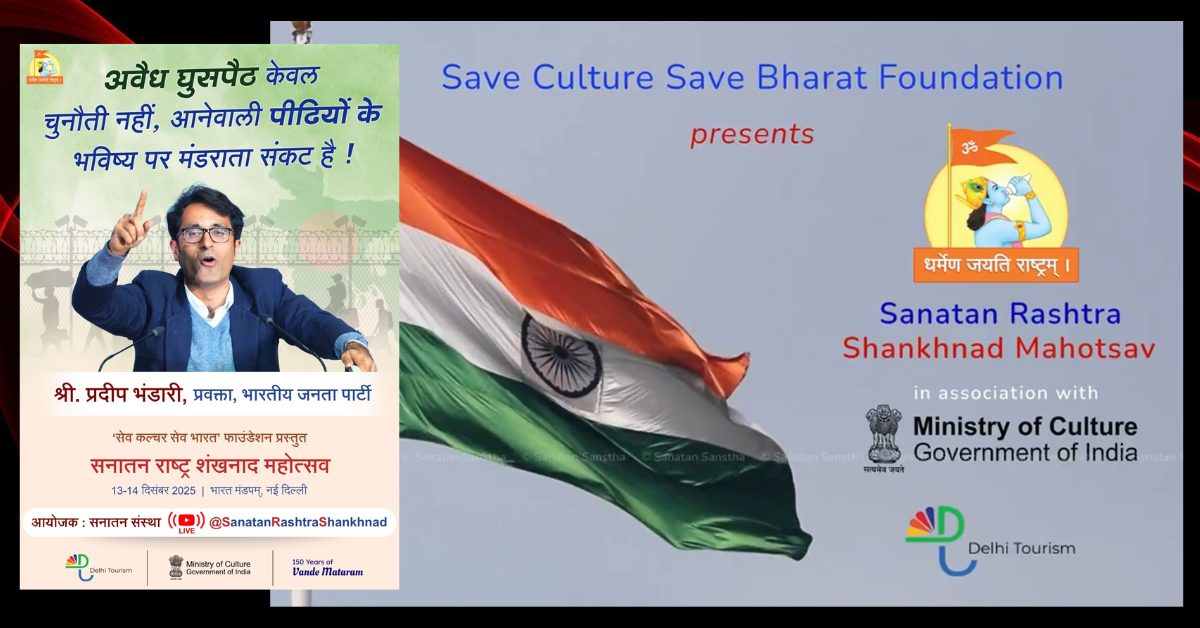At 80, Syed Ikhlaq Latifi’s face is lined and leathery, with a stark white beard. But he’s still able to scramble up three flights of stairs to his roof to describe what he watched from there, in horror, nearly 30 years ago.
On Dec. 6, 1992, a mob broke through barricades around the Babri Masjid, a 16th century mosque in Latifi’s hometown of Ayodhya in northern India. He points to where the mosque’s three massive stone domes used to be. It’s now an open, dusty lot, as wide as a football field, lined with barbed wire.
The mosque was built when India was ruled by the Mughals — Muslim emperors. They built thousands of mosques, forts and other landmarks all over northern India, including the country’s most famous: the Taj Mahal, which houses the tomb of the emperor Shah Jahan’s favorite wife.
On that terrible day in 1992, Latifi couldn’t recognize the men in the mob. They were mostly strangers from out of town, he says.
“They climbed on top of the domes and tombs. They were carrying hammers and these three-pronged spears from Hindu scripture. They started hacking at the mosque,” Latifi recalls. “By night, it was destroyed, and they set fire to nearby houses.”
Latifi watched as flames lit up the night sky. Then he and his family fled for their lives.
In riots that followed, thousands of people, mostly Muslims, were killed across India. When Latifi returned to his neighborhood about six weeks after he fled, he found his home — along with an adjacent small mosque and Islamic community center — vandalized and burned. He managed to salvage the small mosque’s damaged minarets from the rubble and rebuild.
To watch the Babri mosque’s destruction, Latifi says, was shocking. But he also says he wasn’t surprised.

Calls for a Hindu temple
Hard-line Hindus had been calling for years for the Babri mosque to be destroyed. It was built on the exact spot in Ayodhya where Hindu faithful believe a Hindu god, Lord Ram, was born. Some believe a Hindu temple stood there centuries earlier, though it’s a matter of debate among archaeologists.
In the late 1980s, calls for the Babri mosque’s destruction grew louder. India’s dominant political party at the time, the left-leaning, secular Congress party, was mired in corruption scandals. Hindu nationalists — those who believe India should be a Hindu nation — were gaining influence.
The old quarter of Ayodhya, where the Babri mosque stood, is home to dozens of Hindu temples dedicated to Lord Ram and related gods. But many Hindus now want a new Ram Mandir, a temple to Lord Ram, to be built on the same spot where the mosque stood.
Today, with Hindu nationalists running the country, those calls have gained traction at the highest level of Indian politics. Nearly three decades after the bloodshed at Ayodhya, as Prime Minister Narendra Modi runs for a second term, his ruling Bharatiya Janata Party has made the construction of a Ram Mandir one of its key campaign promises.
Some in the BJP call the mosque’s construction nearly five centuries ago a historical injustice that needed correcting. But moderates warn that building such a temple risks reigniting some of the deadliest sectarian violence in India’s history.
For hard-line Hindus, the mosque’s existence was as offensive as a mosque might be to devout Christians if it were on the exact spot in Bethlehem where Jesus is said to have been born — or as offensive as a church might be to Muslims if it were on top of the Prophet Muhammad’s birthplace in Mecca, says Shriraj Nair, 45, national spokesperson for the Hindu nationalist group Vishva Hindu Parishad.
Vishva Hindu Parishad’s parent organization is the Rashtriya Swayamsevak Sangh — the largest and most powerful Hindu nationalist group in India. RSS members were among those wielding hammers back in 1992 at the Babri mosque. Nair, who was 19 years old at that time, remains active in the RSS.
“I felt very proud when the mosque was demolished,” Nair says. “From that time onward, the word ‘Hindutva’ — or the feeling of being Hindu — came into everybody’s mind. It was a big success.”
Thousands killed
Footage from that day shows mobs rampaging through Muslim homes and businesses in Ayodhya.
Tayab-un-Nisa still lives in the same house where her husband was bludgeoned to death near the front gate.
Now in her 70s (she isn’t sure of her exact age), Tayab-un-Nisa, who goes by one name, sits with her granddaughters and pages through photo albums of her late husband. Her father-in-law had been an imam at the Babri mosque. Theirs is a prominent Muslim family in Ayodhya.
“I’ve wept a lifetime of tears,” she says.
She blames outsiders and politicians for the violence, not her Hindu neighbors in the religiously mixed city.
“How else could I keep living here?” she says, shaking her head.
As Hindu-Muslim riots spread across India that week, some 700 people were killed on the other side of the country in what was then called Bombay (now Mumbai). Hindus were targeted for violence in neighboring Pakistan and Bangladesh, as well as in the Middle East.

Even a decade later, in 2002, the memory of the mosque’s destruction remained so incendiary that a train carrying Hindu pilgrims from Ayodhya came under attack in the Indian state of Gujarat, sparking riots that left more than 1,000 people dead — most of them Muslim. At the time, Narendra Modi was Gujarat’s chief minister, equivalent of state governor, and many blamed him for doing little or nothing to stop the violence. (In 2005, Modi was even denied a U.S. visa for this reason).
Rise of Hindutva
What happened in Ayodhya in 1992 was a milestone for Hindutva, or Hindu pride. It’s a key element of Modi’s vision for India as he runs for reelection this month and next.
For Hindu voters who care deeply about Lord Ram’s presumed birthplace, step one was destroying the Babri mosque. Step two is building a Hindu temple in its place. The leaders of Modi’s BJP say that after three decades, their party is the force most capable of doing that.
“Our party wants a temple to Lord Ram built on that same spot [in Ayodhya] as soon as possible. No doubt about it!” BJP chief Amit Shah told a party convention in January.
Many of India’s Hindus, part of the country’s majority religion, condemned the 1992 killings and felt discouraged by this horrible bout of sectarian violence. But some hard-liners justified the bloodshed as marking a new beginning — removing remnants of a Muslim civilization in India and restoring a Hindu one.
Modi’s party is making those sentiments a priority in a way that the Congress party, which dominated Indian politics since independence, has been unable or unwilling to do. Congress is best known outside India as the party of Mohandas Gandhi, who sought to reconcile Hindus and Muslims with his doctrine of nonviolence.
But a former chief minister from the party has individually expressed support for a Ram Mandir. Some Congress lawmakers have sought to boost their Hindu nationalist appeal on other issues, such as by supporting age restrictions for female worshippers at the Sabarimala temple in southern India. But the party has not come to a unified position on Ayodhya.
Modi initially promised that construction would begin in his first term, but it hasn’t happened. India’s Supreme Court now controls the property where the Babri mosque once stood, and judges are hearing petitions on what can be built. Court-appointed mediators are counseling activists on both sides.
Some on the far right accuse Modi of dragging his feet. It’s similar to the pressure President Trump gets from immigration hard-liners to keep his campaign promise and build a wall along the U.S.-Mexico border. Modi is well aware of the sensitivities.
“Even Narendra Modi, who comes from the Hindu nationalist movement — that’s where he spent his formative years, where he cut his teeth — is pragmatic to know that you can’t shift India too far to the right too quickly,” says Milan Vaishnav, a senior fellow at the Carnegie Endowment for International Peace in Washington, D.C. and director of its South Asia Program. “If the BJP is brought to power [in the 2019 elections], will they then interpret their mandate as ‘OK, now we really have the backing of the people to take on some of these bigger, more controversial hot-button social issues that we have put on the back burner for our first term?’ ”
Ayodhya today
Even though a Ram temple doesn’t exist yet in Ayodhya, there’s a chief priest in waiting.
Satendra Das, 80, with a long, white beard, wears a bright saffron Hindu robe. Back in 1992, while Syed Ikhlaq Latifi watched the destruction of the Babri mosque from his rooftop, Das was on the ground and charged into the melee.

Decades earlier, Hindus had managed to place a small statue of Lord Ram inside the Babri mosque. Mosque leaders acquiesced to its presence. Some Hindus believe that at that moment, the building ceased to be a mosque and was transformed into a Hindu temple by virtue of having an idol inside; Muslims disagree.
In early 1992, Das arrived in Ayodhya to work as a caretaker of the statue, so he was allowed to enter the building. In the midst of the destruction, Das ran inside to save the idol. Afterward, he placed it atop the mosque’s ruins — where it still sits today.
The rubble has long been carted away, so the idol sits in a dusty lot on a squat wooden scaffold, draped by a blue tarp. To catch a glimpse of it, visitors must pass through a maze of claustrophobia-inducing passageways covered by a roof and enclosed with metal caging — like long switchback hallways surrounded by metal bars. They pass through metal detectors and turnstiles, surrender their passports or ID cards and are patted down by guards at several checkpoints. Hundreds of police officers patrol the area.
Hindu pilgrims — thousands of them — shuffle past the idol. They’ve traveled from all over India. Many are barefoot. One woman is weeping. Someone hands out sweets as an offering to Lord Ram.
“Jai Shree Ram! Jai Siya Ram!” they chant. “Long live Lord Ram!”
They are determined to be heard here — and at this month’s polls.
NPR producers Furkan Latif Khan and Sushmita Pathak contributed to this report.
This article first appeared on npr.org


